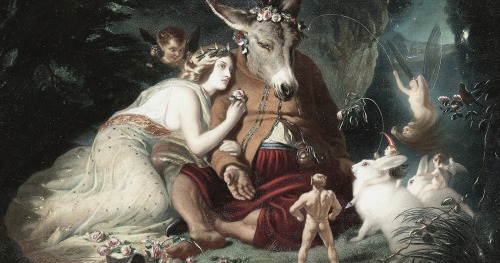funeral-wreaths:Victorian fairy painting‘Fairy painting, particularly when produced in its Golden Ag
funeral-wreaths:Victorian fairy painting‘Fairy painting, particularly when produced in its Golden Age, between 1840 and 1870, is a peculiarly British contribution to the development of Romanticism. […] As modern industrial progress engulfed the English countryside, the Victorians embraced belief in fairies as a reaction to the disenchantment of the world […] Fairy painting is the visual evidence of a spectrum of mid-19th-century preoccupations: nationalism, antiquarianism, exploration, anthropology, the dismantling of religious belief and, crucially, the emergence of spiritualism.’Jeremy Maas and others, Victorian Fairy Painting, exhib. catalogue (Royal Academy of Arts: Merrell Holberton, London, 1998)John Anster Fitzgerald (1823-1906), The Fairy’s Barque, 1860John Anster Fitzgerald, Fairy Hordes Attacking a Bat, date unknownRichard Dadd (1817-1886), Titania Sleeping, 1841Joseph Noel Paton (1821-1901), The Reconciliation of Oberon and Titania, 1847Edwin Landseer (1802-1873), Scene from ‘A Midsummer Night’s Dream’, Titania and Bottom, 1848-51Richard Doyle (1824-1883), ‘The Triumphal March of the Elf King’, from In Fairyland, or Pictures from the Elf World, 1869 -- source link
Tumblr Blog : www.tumblr.com
#fairies#art





